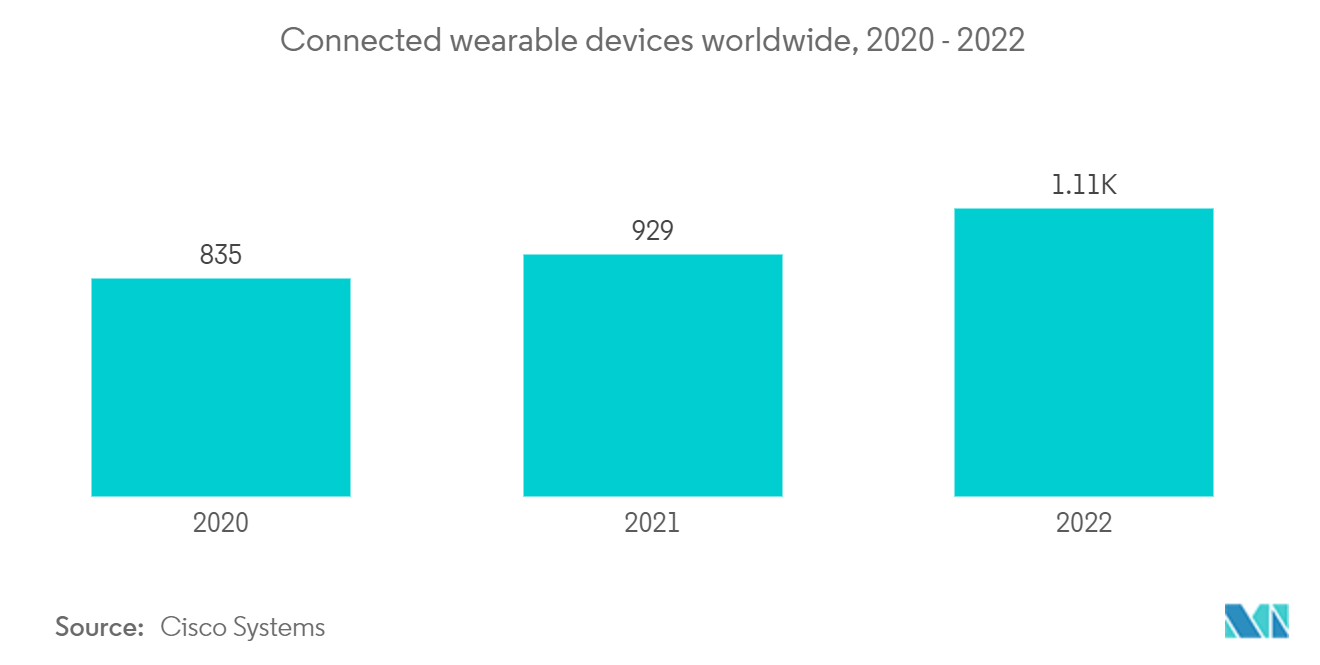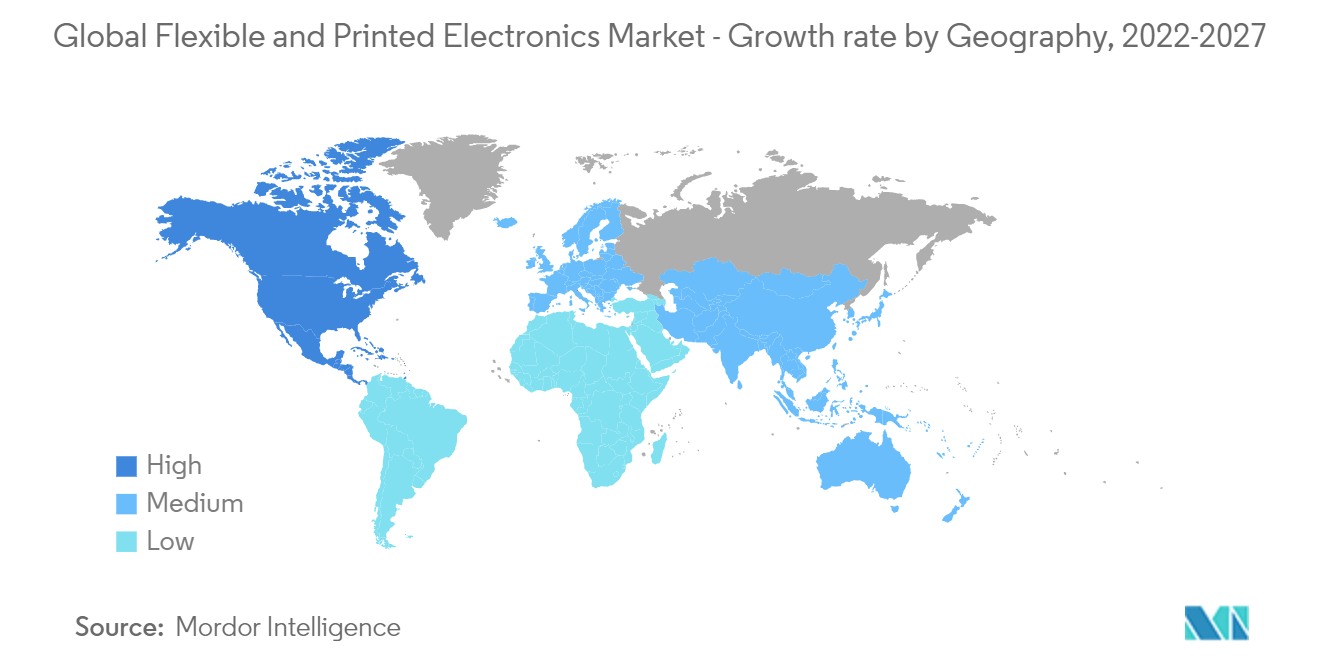Market Trends of Global Flexible and Printed Electronics Industry
This section covers the major market trends shaping the Flexible & Printed Electronics Market according to our research experts:
The explosive growth of smart wearable devices to augment market growth
- Based on a new wave of digital materials, printed, flexible, and stretchable sensors and electronics will open up new possibilities in industries ranging from healthcare to automotive to buildings. These technologies will drive innovation in smart medical technology, automotive, smart manufacturing, the Internet of Things (IoT), and consumer electronics.
- The global flexible and electronics Printing market is being driven by using flexible batteries in wearables, electronic textiles, portable electronics, wireless sensors, and smart packaging-their ability to treat skin patches integrated with printed batteries displacing medicine. The market growth of OLED eye masks configured with printed and flexible electronics is being disrupted.
- Printed electronics provide users with photonic devices and printed electronics on various substrates; printing technologies include flexography, inkjet, gravure, and screen printing. These techniques print on substrates such as cloth, paper, and plastics. This printing method is widely used on wearable devices, in the sports industry, and for flexible screens, among other things.
- The growing acceptance of thin-film solar modules for a wide range of applications and the growing use of flexible displays for applications such as wearable devices and smartphones are all driving market growth. Furthermore, the growing use of flexible electrical parts in IoT applications, and flexible electronics in healthcare applications, are influencing the flexible electronic components market.
- Recent advancements in stimuli-responsive surfaces and interfaces, sensors and actuators, flexible electronics, nanocoatings, and conductive nanomaterials have created a new generation of smart and adaptive electronic fibers, yarns, and fabrics for use in E-textiles. In addition, Wearable low-power silicon electronics, light-emitting diodes (LEDs) on fabrics, textiles with integrated Lithium-ion batteries (LIB), and electronic devices such as smart glasses, watches, and lenses have all been widely explored and commercialized.

Asia-Pacific to hold considerable market share
- APAC is expected to have a considerable share of the global printed electronics market throughout the forecast period. APAC is a hub for the production of electronic devices and components. The expansion of the APAC printed electronics market can be attributed to the region's large-scale production of electronic components and increased investments in R&D activities related to printed electronics.
- Asia-Pacific printed electronics market is unique compared to the other regions because of its size and diversity. The region accounts for more than 60% of the global population, and its population has grown nearly four-fold in the 20th century alone. This rise in population is a huge advantage in terms of economic potential and aids the suppliers of the printed electronics industry.
- APAC is home to Samsung Display and LG Display, two global leaders in flexible display manufacturing and innovation. This provides the local market with indigenous production sites and low-cost prices, which increases local demand from the densely populated economies of India and China.
- The region is also one of the major automotive manufacturing regions globally. The rapid growth of advanced automotive electronics for engine control, ADAS, and future autonomous vehicle infrastructure is increasing the need for efficient solutions that lower the overall assembly cost, deliver the highest yield, and ensure reliability. There have been several noteworthy advances already. Printed heaters have long been part of cars. Additionally, OLED lighting appears on rear taillights in a few high-end Audi and BMW models. OLED lighting solutions allow designers to come up with new and creative looks.


